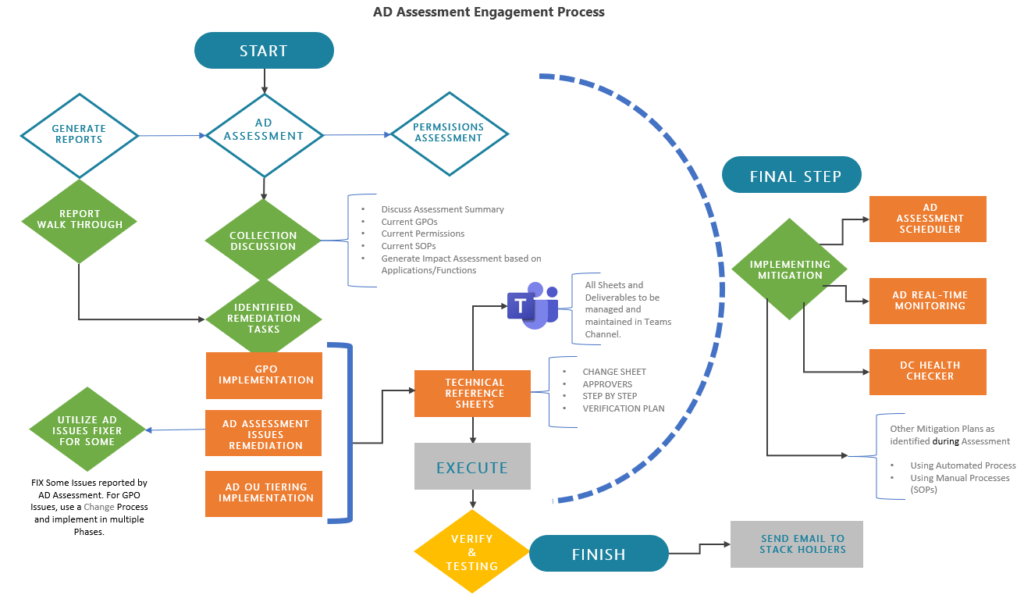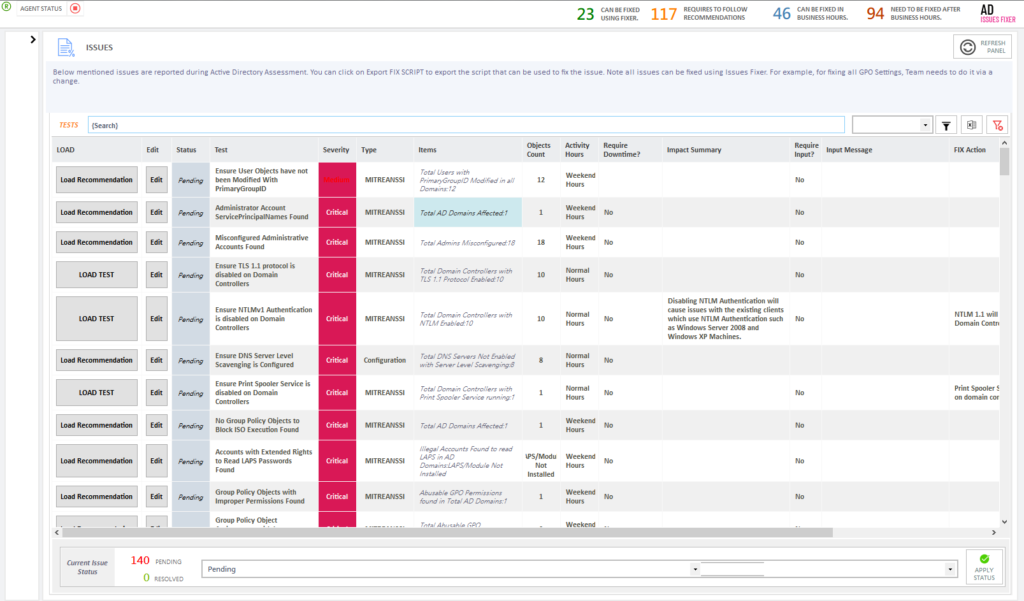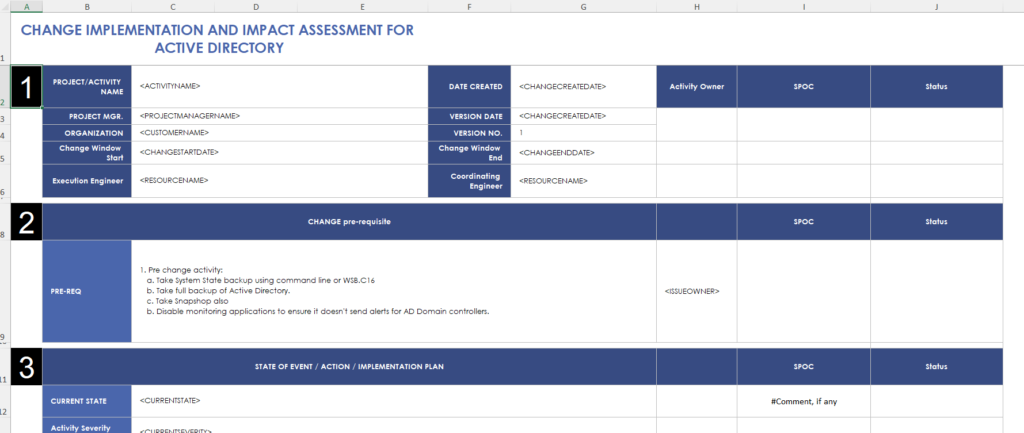1Active Directory Assessment
The first task as highlighted in the diagram above is to perform a complete and advanced assessment for Active Directory environment. The SmartProfiler for Active Directory ships with 300 advanced assessment checks that we utilize for checking every component of Active Directory, and several other tools that are used (part of SmartProfiler) to check other components such as Active Directory Permissions, Active Directory GPO Settings, Tier-0 Objects, location of critical objects and a few more that we check based on the discussion with our customer.
How many times have you assessed an Active Directory environment for a client and seen users with unrestricted delegation, trusted for delegation, DES-Encryption enabled, and pre-authentication Kerberos disabled? So, a small business running Active Directory with two to five domain controllers should be able to manage their AD infrastructure easily without the need for utilising the settings for users. Unrestricted delegation, DES-Encryption for users, and deactivating pre-authentication Kerberos for users are not actually required. You would still need to complete the tests associated to users as part of the standard checklist included in the Assessment tool to make sure everything is in order for user objects.
ACTIVITIES
- Run all tests from SmartProfiler against AD Forest
- Make sure to cover all domain controllers.
- Ensure all 300 tests are executed.
- Cover every aspect of Active Directory
- Generate Assessment Report



